Special Report
Before and After Photos of Some of the World's Most Disastrous Weather Events

Published:
Last Updated:

“Weather events” is a nice way of describing atmospheric phenomenon that wreak havoc on us, directly or indirectly and in varying degrees of severity. The most obviously calamitous examples of these events are cases of winds gone wild — hurricanes, tornadoes, cyclones. These seem particularly insidious because they give physical, visible, destructive shape to something we otherwise hardly notice: the air we breathe.
Hurricanes and cyclones (also called typhoons) are immense, swirling tropical storms that form when hot air rises over warm seas near the equator. Tornadoes, born out of thunderstorms, take shape over land, turning into funnels of spinning air that can cut a path as much as a mile wide across the countryside. Both kinds of event can have catastrophic results, causing massive property damage and claiming lives.
Floods can be massively destructive, too. Water is vital for life — between 55% and 60% of our bodies is made up of it — but it can be deadly when too much of it comes too fast. Floods are often caused by heavy rainfall or rapid snow melt, causing rivers and other bodies of water to overflow. Other causes include incompetent damming that raises water levels and sometimes by earthquakes or major coastal landslides that set off walls of water known as tsunamis.
It might be said that the opposite of floods are droughts — too little water over a long period of time instead of too much all at once. Droughts are more subtle than floods. People don’t even always realize they’re experiencing one until the rainfall statistics come in, or the crops don’t. As the U.S. Geological Survey’s Water Science School puts it, “While it is relatively easy to define what a hurricane or earthquake is, defining a drought is more subjective.”
The term means something different to a farmer than it does to a meteorologist or water manager. But everyone agrees that a drought is a span of unusually dry conditions caused by a shortage of rain or snowfall, and that the results can include famine and devastated landscapes.
Wildfires might not seem like weather events at first, but weather plays a major role in their development, even when they’re actually sparked by careless or malicious human actions. Excessive heat warms and dries the fire’s fuel — trees and underbrush. Wind feeds the fire with oxygen and spreads it quickly from its source. Fire also creates winds of its own, known as fire swirls, similar to tornadoes and capable of sucking up burning logs and embers and tossing them across the countryside.
We’re used to seeing images of weather-borne destruction — inundated fields, houses turned to kindling, vast tracts of charred earth, and worse. In order to truly understand how profoundly weather events affect our world, though, it’s illuminating to compare these scenes of disaster to the same scenes as they were before tragedy hit.
Click here for before and after pictures of the world’s worst weather events.
Click here to see our methodology.
Before

After
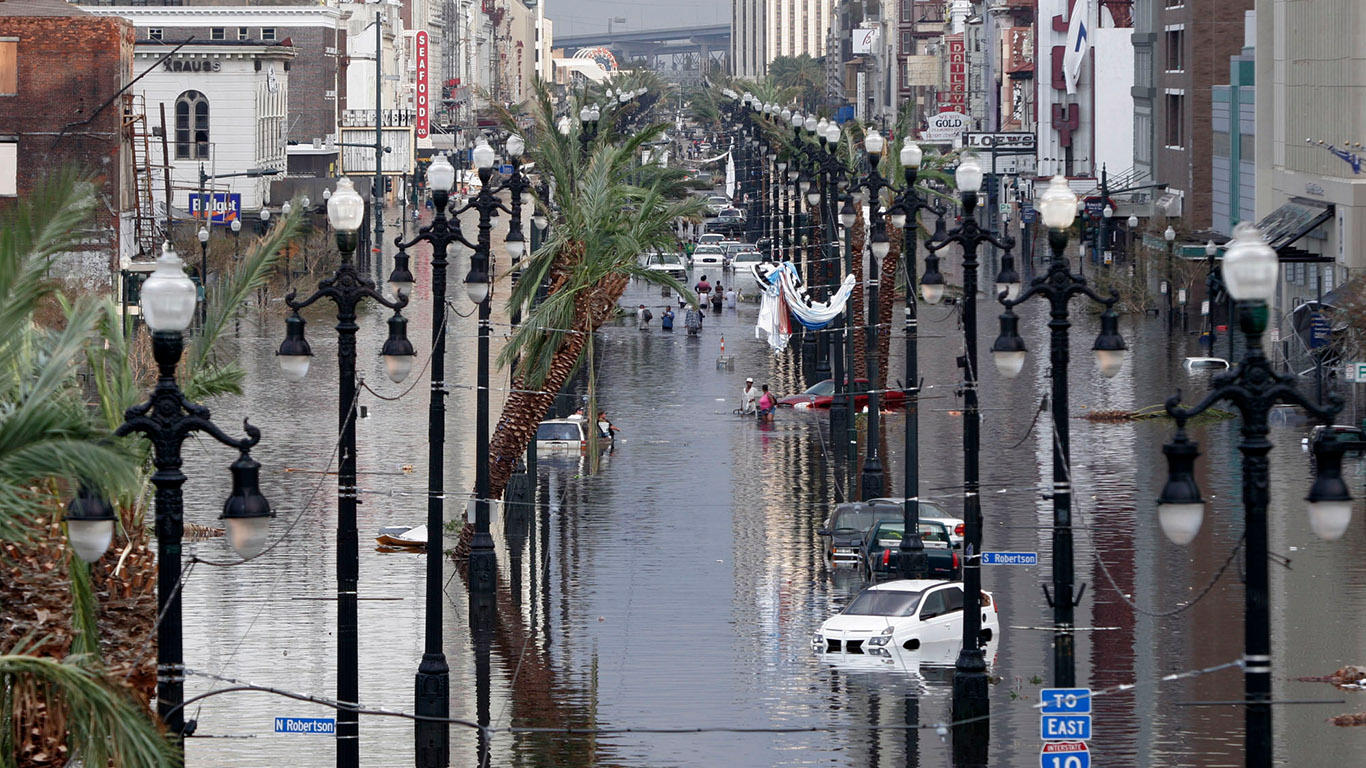
1. Hurricane: Katrina, New Orleans and vicinity
> Year: 2005
> Fatalities (direct or indirect): 1,833
FEMA described the storm and its subsequent flooding as “the single most catastrophic natural disaster in U.S. history,” and estimated the costs of its total damage at $108 billion.
[in-text-ad]
Before

After

2. Flood: Lockyer Valley, Queensland, Australia
> Year: 2011
> Fatalities: 19
Following the tragedy, the Lockyer Valley Regional Council implemented a community resettlement project, moving citizens out of potential flood zones to protect them from future flooding. Some 78% of Queensland was declared a disaster zone due to floods between December 2010 and January 2011.
Before

After
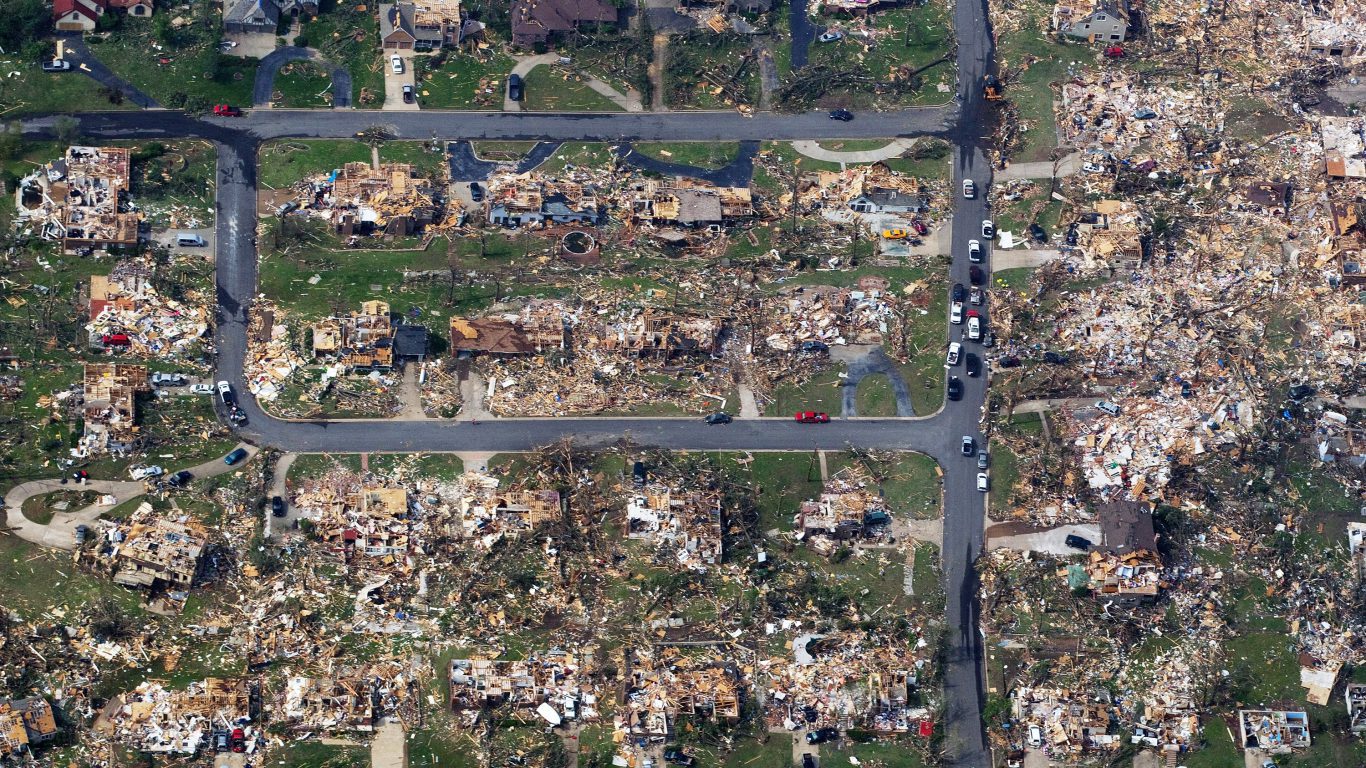
3. Tornado: Joplin, Missouri
> Year: 2011
> Fatalities: 158
At their peak, winds reached a speed of more than 200 miles an hour. About 7,000 homes and a number of institutions and businesses were destroyed.
Before

After
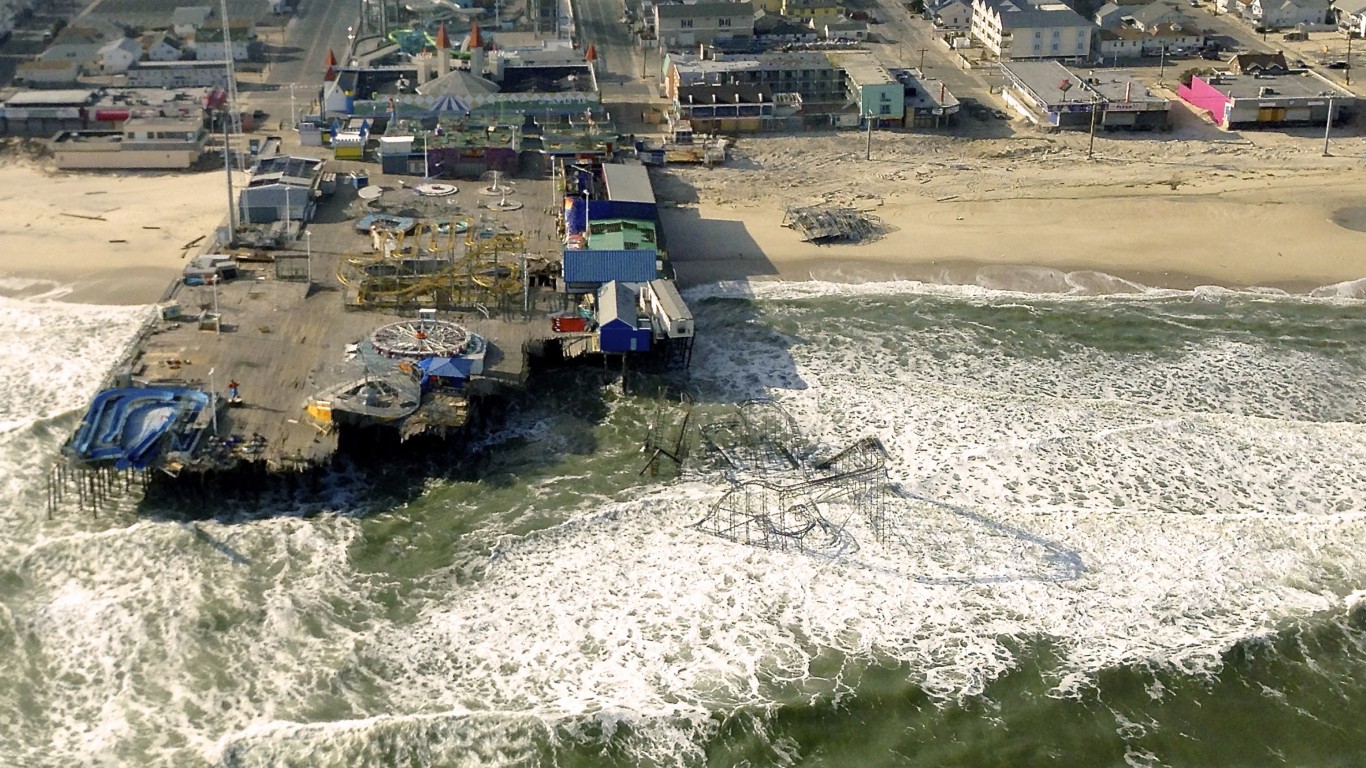
4. Hurricane: Sandy, East Coast of the U.S. and the Caribbean
> Year: 2012
> Fatalities: 147
Sandy caused property damage costing approximately $50 billion, according to estimates, making it the second costliest hurricane (after Katrina) to hit the U.S. since 1900. Sandy caused cancellation of airline flights, much public transportation, Broadway shows, and trading on the New York Stock Exchange.
[in-text-ad-2]
Before

After

5. Typhoon: Haiyan, The Philippines
> Year: 2013
> Fatalities: 6,000+
Some sources estimated that as many as 10,000 people died as a result of the typhoon. About 3.9 million people were forced from their homes by the storm, and more than 27,000 were injured.
Before

After

6. Hurricane: Maria, Dominica and Puerto Rico
> Year: 2017
> Fatalities: 4,645 (disputed estimate)
The official death toll for Maria in Puerto Rico is 64, but this number has been widely discounted; the figure above comes from a statistical analysis published in the New England Journal of Medicine. Spanish-American chef José Andrés came to national prominence after assembling a team to prepare millions of meals for the affected in Puerto Rico.
[in-text-ad]
Before

After

7. Wildfire: Chilcotin Plateau and vicinity, British Columbia, Canada
> Year: 2017
> Fatalities: 0
This conflagration, the result of 19 smaller fires merging, covered some 1,154,000 acres and stretched more than 80 miles end to end. Remarkably, there were no fatalities from the fire, though a small herd of wild horses was found burned to death.
Before
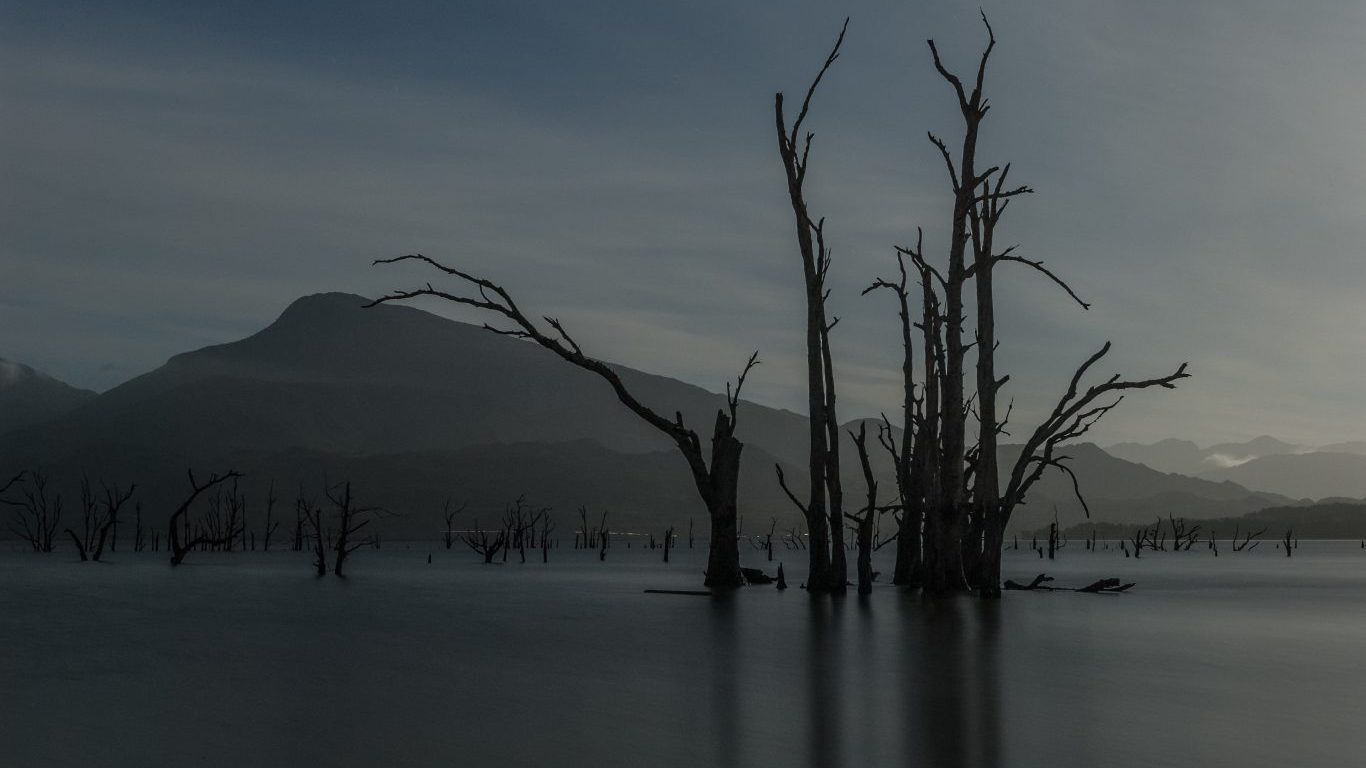
After

8. Drought: Cape Town area, South Africa
> Year: 2018
> Fatalities: 0
While no deaths were directly attributable to this long-term water shortage, an estimated 25% of orchards and vineyards in the region were decimated; reservoirs turned into dust bowls; and the city of Cape Town threatened a “Day Zero” (now delayed) on which water flow to most taps would be shut off.
Before
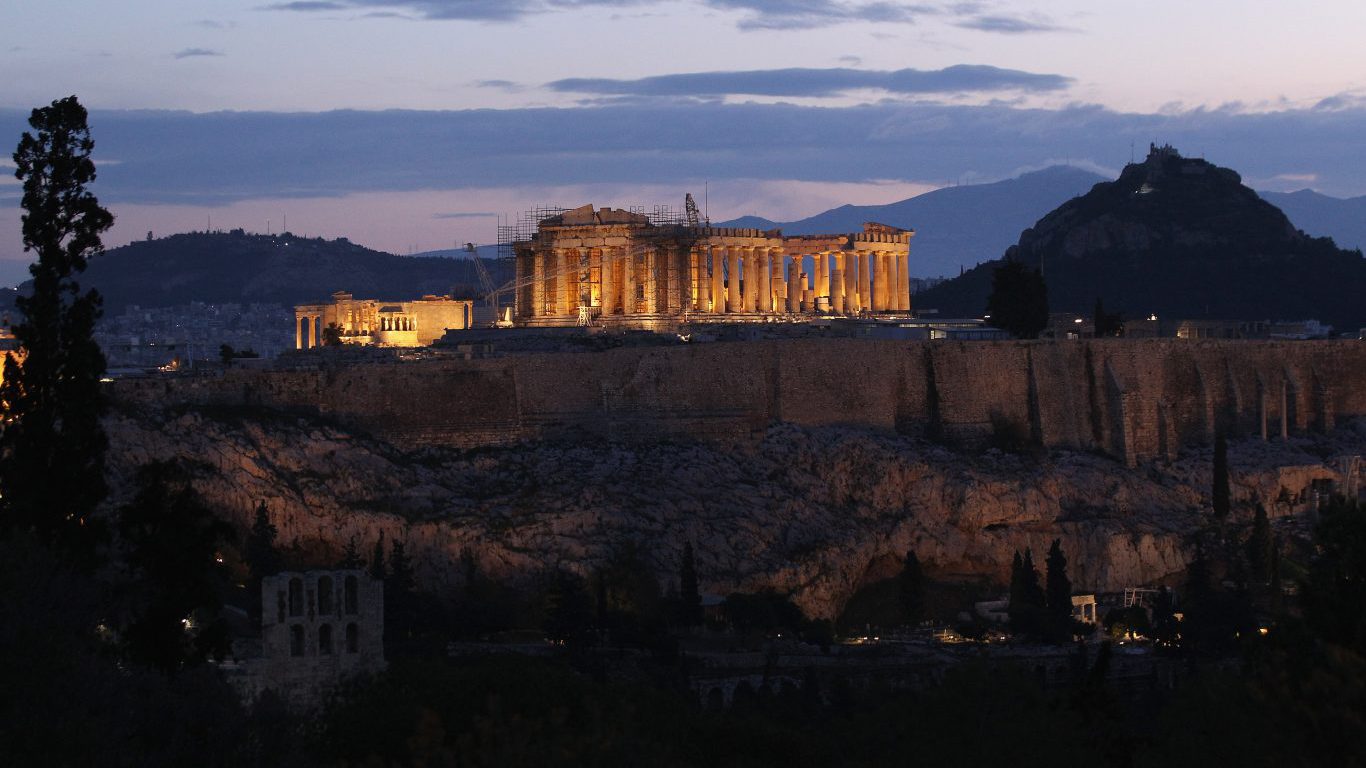
After

9. Wildfire: Athens and vicinity (Attica), Greece
> Year: 2018
> Fatalities: 91
Believed to have been started by arson, this is considered Europe’s deadliest wildfire in over a century. While many of the deceased died directly from the blaze, others drowned in the Mediterranean fleeing its ravages.
[in-text-ad-2]
Before
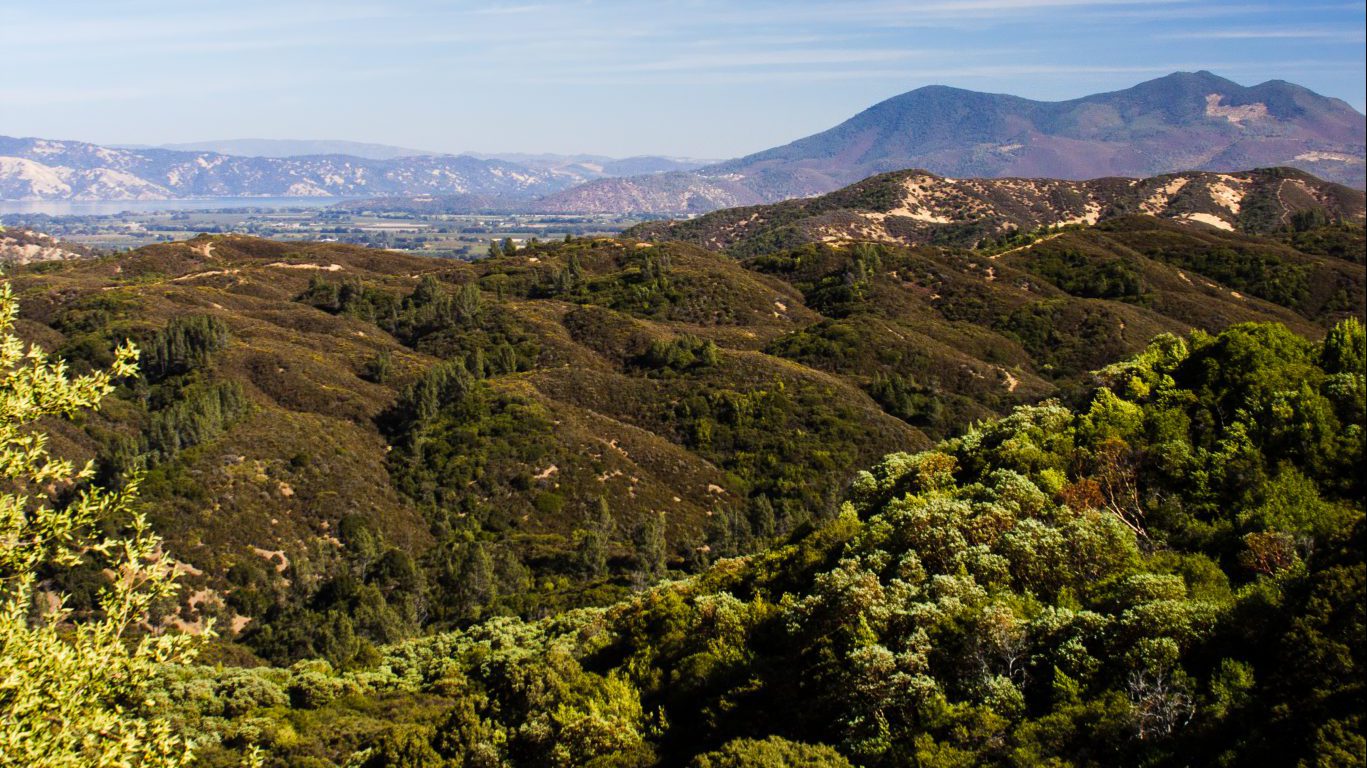
After
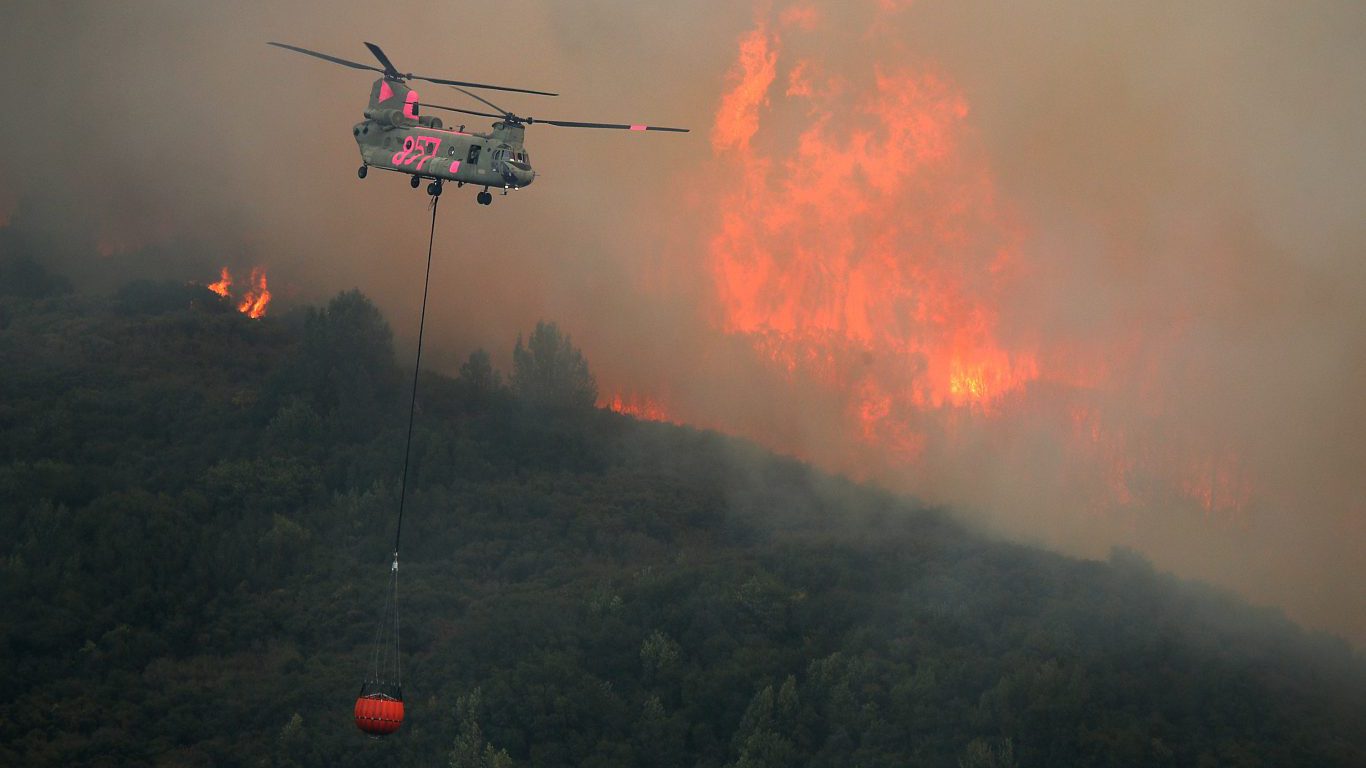
10. Wildfire: Mendocino Complex, Mendocino and neighboring counties, California
> Year: 2018
> Fatalities: 1
This fire complex, consisting of two adjacent fires affecting four California counties, is still burning, though it is mostly contained. Thus far it has burned more than 422,000 acres and destroyed more than 275 structures. It is the largest wildfire in California history.
Before
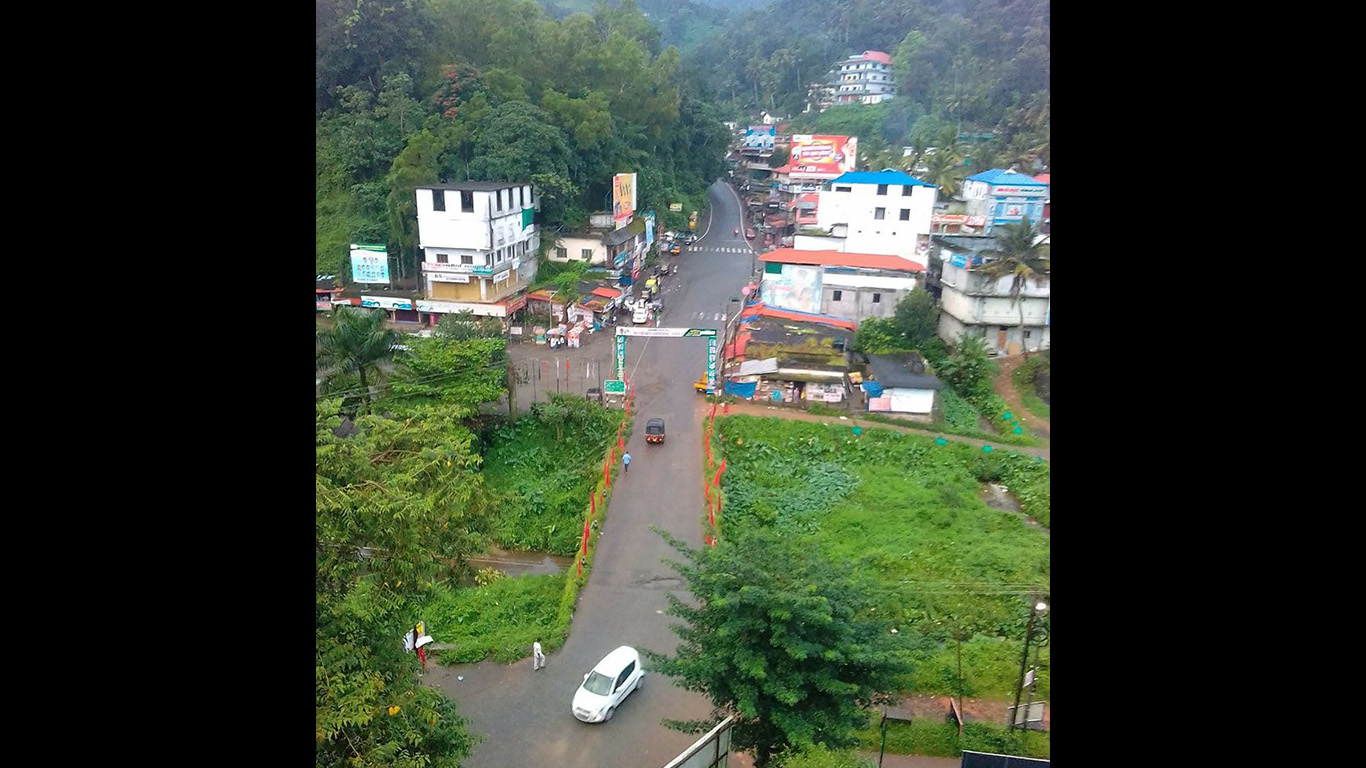
After

11. Flood: Kerala, India DONE
> Year: 2018
> Fatalities: 357
The product of unusually intense monsoon rains, this flood has left more than 350,000 people homeless. This is considered the worst flood in Kerala since the epic monsoon flood of 1924.
Methodology
24/7 Wall St. consulted lists of cataclysmic weather events published by the National Oceanic and Atmospheric Administration’s National Centers for Environmental Information, the United Nations Weather Agency, the Brookings Institution, and the Australian Government’s Geoscience Australia site, and consulted reportage from The Guardian, the BBC, PBS, Weather.com, and Dynamic MapReport to establish a shortlist of the world’s most catastrophic 21st-century hurricanes, cyclones, tornadoes, floods, droughts, and wildfires.
Because the extent of a weather event’s destructive powers can be expressed in various ways — including area affected, value of property destroyed, and of course human injury and loss of life — it is difficult to identify the very worst of all these terrible disasters. We used editorial discretion to pick, from among the most obviously destructive events, examples representing many parts of the country and the world, including several that have seriously impacted the United States in recent memory.
Retirement planning doesn’t have to feel overwhelming. The key is finding expert guidance—and SmartAsset’s simple quiz makes it easier than ever for you to connect with a vetted financial advisor.
Here’s how it works:
Why wait? Start building the retirement you’ve always dreamed of. Click here to get started today!
Thank you for reading! Have some feedback for us?
Contact the 24/7 Wall St. editorial team.